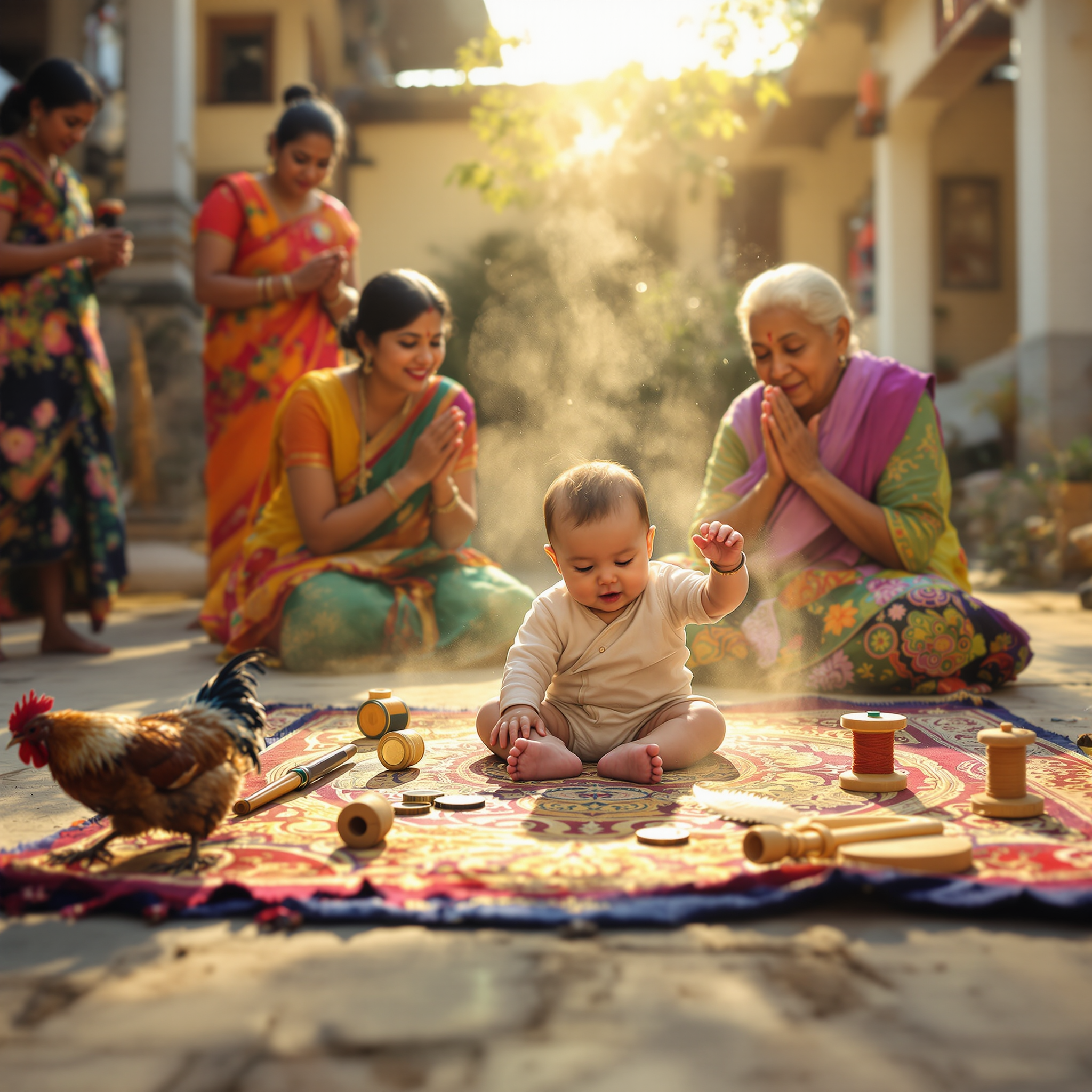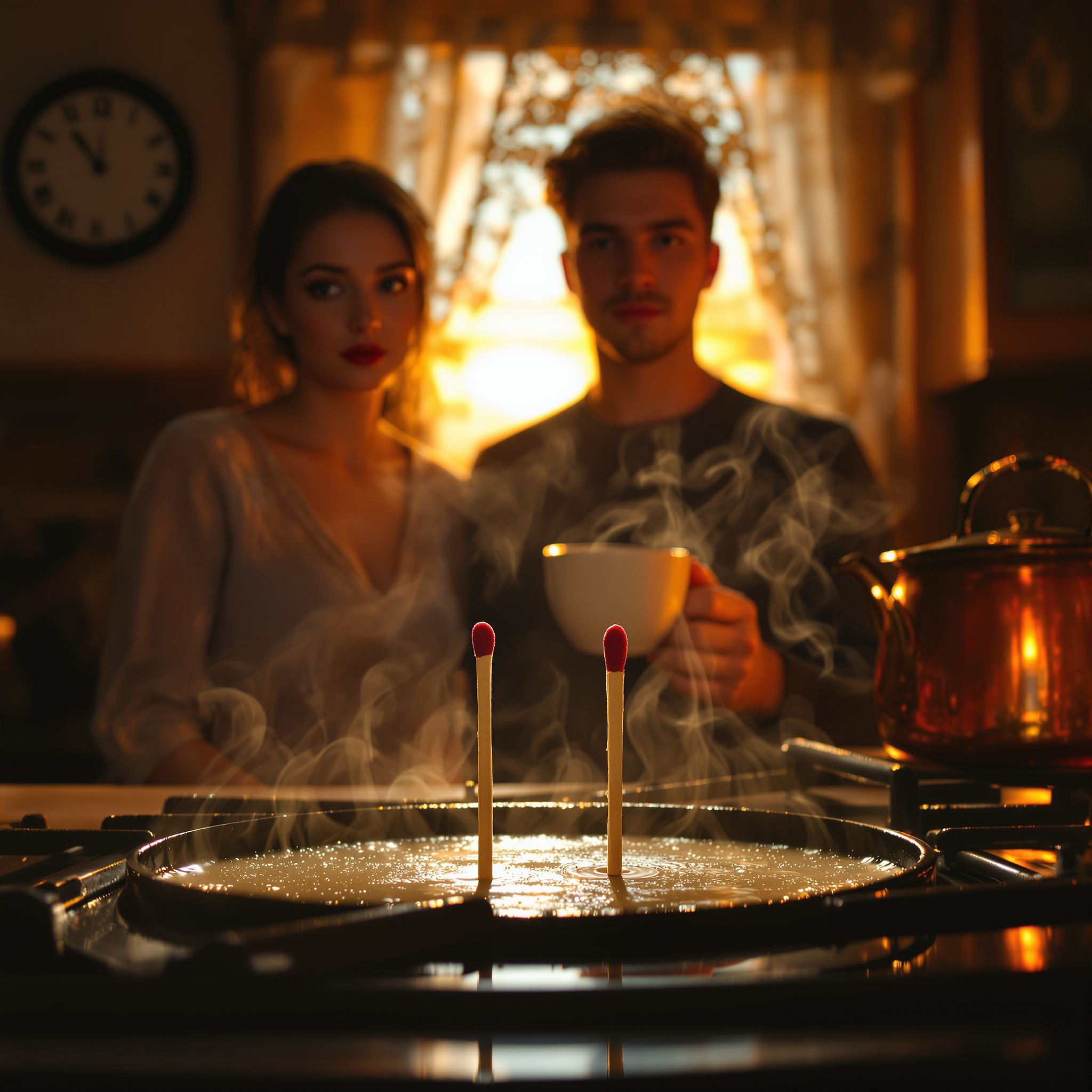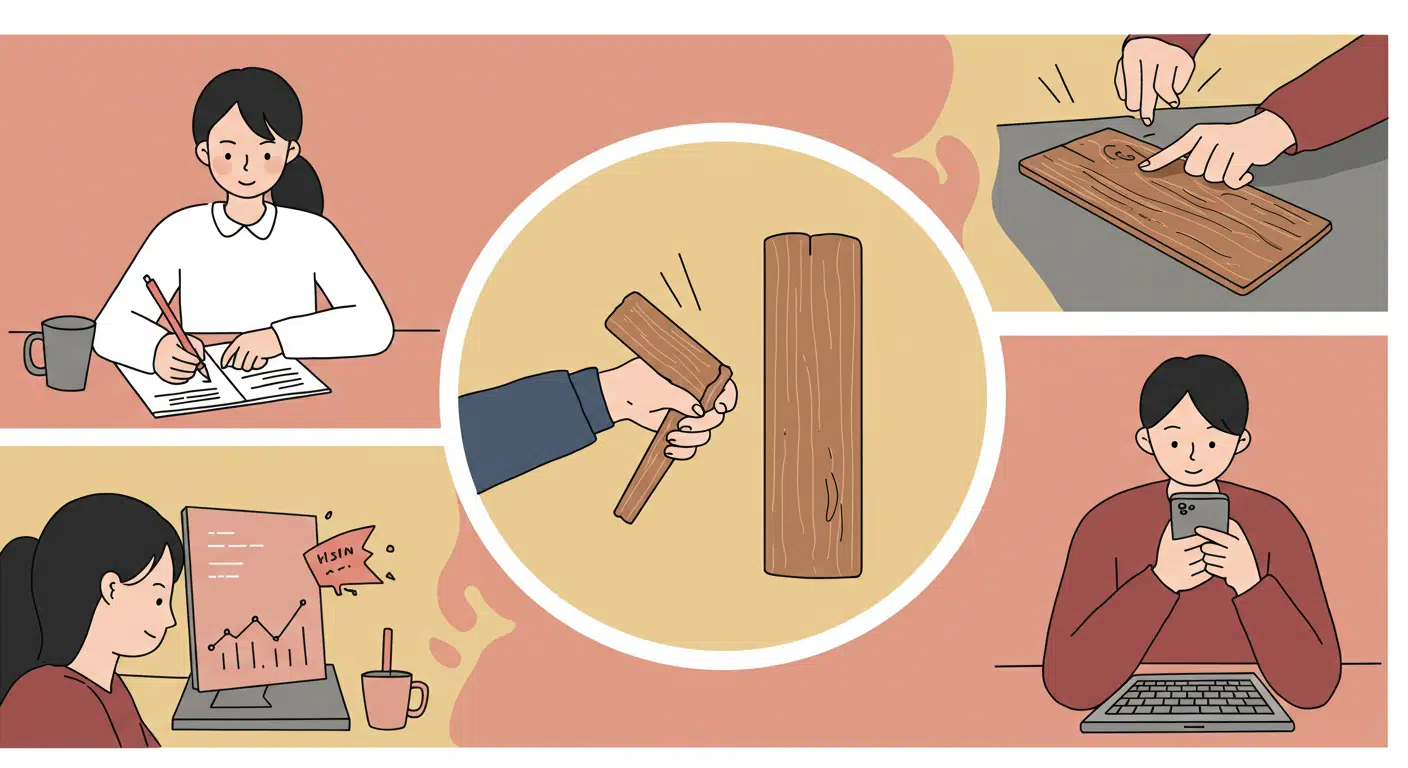This superstition was often practiced in domestic settings, particularly around hearths and stoves. A person would name two wooden matches—often assigning one to themselves and the other to an individual they hoped to marry or were romantically involved with—and stand them upright on a hot metal stove with the sulphur heads touching the surface. Heat would eventually soften the matchsticks, causing them to fall. The interpretation depended on how the matches fell: if they both tipped over simultaneously or landed close together, it was taken as a good omen indicating a lasting union or shared fate. If only one match fell or they fell far apart, it was thought to signify separation or a failed romantic connection. This symbolic act served as an informal form of love divination, echoing the themes of fate and desire for romantic certainty that characterize many folk traditions.

A baby’s future career or fate is predicted by the first object they select during a ceremonial setup.
In several Asian and Eastern European cultures, a traditional ceremony is held for babies usually around their first birthday. Known


